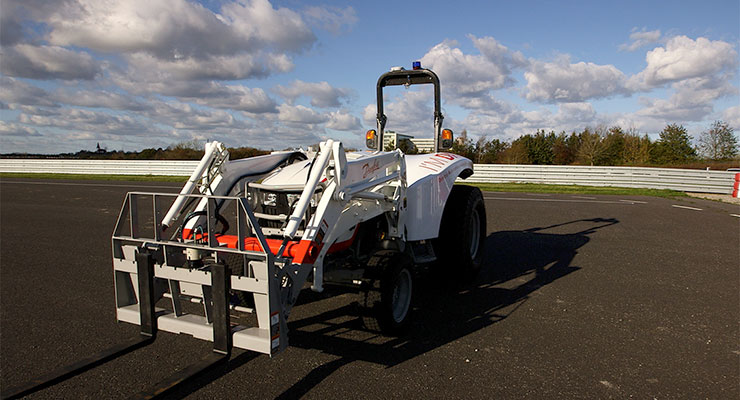Danfoss Power Solutions debuted its ground-breaking autonomous capabilities with a technology demonstration at AGRITECHNICA in Hanover, Germany. DAVIS (Danfoss Autonomous Vehicle Integration System) will allow OEMs to add autonomous characteristics to their off-highway machines.
 Introducing DAVIS at AGRITECHNICA showcased the capabilities of Danfoss components and invited conversation between Danfoss and its customers on how they can work together to build autonomous machines.
Introducing DAVIS at AGRITECHNICA showcased the capabilities of Danfoss components and invited conversation between Danfoss and its customers on how they can work together to build autonomous machines.
“DAVIS has been an exploration project for Danfoss. We started on this journey with the intention of learning exactly what our customers need and how we can partner with them through the right products, systems and support as we move into an autonomous age,” said Allan Hermanni, Senior Director of Portfolio and Innovation at Danfoss Power Solutions.
While Danfoss already has the capability to introduce some autonomous functions, such as remote control steering, to off-highway vehicles, those ventures are distinct from DAVIS. The DAVIS demonstration highlighted the autonomous potential in the off-highway industry, and is a promising first step in working with partners to create a market-ready solution.
DAVIS integrates the company’s extensive application knowledge in hydraulics, electronics, sensors and cloud-based command interfaces to create an autonomous system. As one of the first to utilize autonomous technologies in the off-highway market, Danfoss Power Solutions will partner with its customers and use their machine design expertise to refine DAVIS’s capabilities.
“The technology for autonomous vehicles is already there. What we want to do is fine-tune how sensors work with the technology and add value,” Hermanni said. “To continue to do this, we want to start a dialogue with our customers — to share our knowledge but also to learn from them. They are the ones building the machines, and we want to make sure we’re developing the right solutions for their most pressing needs.”
With DAVIS, the following benefits could be added to existing machine designs:
- Connectivity — DAVIS is connected to a cloud-based command interface, which is used for controls and data analytics. This allows for operator flexibility (as they can control the machine from anywhere), as well as insights into how to improve machine uptime and productivity.
- Path planning — The machine can determine its most efficient path with localized algorithms, rather than through a cloud-based service. It factors in local maps to identify drivable areas and continuously evaluates local driving conditions.
- Obstacle detection — DAVIS uses multiple sensors to detect both stationary and active obstacles in its path, and will update the machine’s path accordingly. Through this function, the machine can track multiple moving objects at a time, increasing safety and productivity.
- Sensor fusion — Multiple sensors are used in the DAVIS system to combine both global and local positioning data, resulting in a more accurate location reading. This increases productivity of the driving and work functions of the machine.
- Intelligent Control — Multiple levels of machine control interface seamlessly through one common platform. The core of DAVIS’s functionality was built on the proven and easy-to-use PLUS+1 platform from Danfoss. This allows OEMs to successfully leverage years of machine expertise from Danfoss with added sensor integration. Furthermore, the PLUS+1 platform allows for easy integration and design flexibility.
Danfoss Power Solutions will continue to partner with its customers in taking the first steps in developing autonomous machines for the off-highway industry.
Danfoss Power Solutions
powersolutions.danfoss.com/davis
Filed Under: Mobile Hydraulic Tips